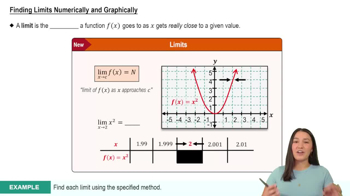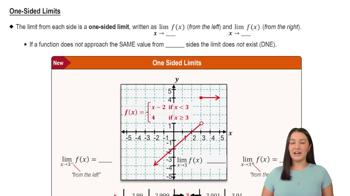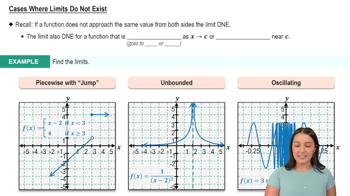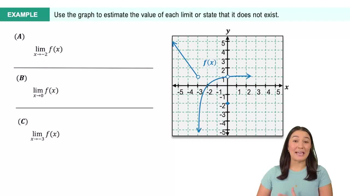Table of contents
- 0. Fundamental Concepts of Algebra3h 29m
- 1. Equations and Inequalities3h 27m
- 2. Graphs1h 43m
- 3. Functions & Graphs2h 17m
- 4. Polynomial Functions1h 54m
- 5. Rational Functions1h 23m
- 6. Exponential and Logarithmic Functions2h 28m
- 7. Measuring Angles40m
- 8. Trigonometric Functions on Right Triangles2h 5m
- 9. Unit Circle1h 19m
- 10. Graphing Trigonometric Functions1h 19m
- 11. Inverse Trigonometric Functions and Basic Trig Equations1h 41m
- 12. Trigonometric Identities 2h 34m
- 13. Non-Right Triangles1h 38m
- 14. Vectors2h 25m
- 15. Polar Equations2h 5m
- 16. Parametric Equations1h 6m
- 17. Graphing Complex Numbers1h 7m
- 18. Systems of Equations and Matrices3h 6m
- 19. Conic Sections2h 36m
- 20. Sequences, Series & Induction1h 15m
- 21. Combinatorics and Probability1h 45m
- 22. Limits & Continuity1h 49m
- 23. Intro to Derivatives & Area Under the Curve2h 9m
22. Limits & Continuity
Introduction to Limits
Struggling with Precalculus?
Join thousands of students who trust us to help them ace their exams!Watch the first videoMultiple Choice
Find the limit by creating a table of values.
limx→1x−2x2−4
A
0
B
3
C
−3
D
2
 Verified step by step guidance
Verified step by step guidance1
Identify the function for which you need to find the limit: \( f(x) = \frac{x^2 - 4}{x - 2} \).
Notice that direct substitution of \( x = 1 \) into the function results in an indeterminate form \( \frac{0}{0} \). This suggests that the function may have a removable discontinuity at \( x = 1 \).
To resolve the indeterminate form, factor the numerator \( x^2 - 4 \) as \( (x - 2)(x + 2) \). The function can then be rewritten as \( \frac{(x - 2)(x + 2)}{x - 2} \).
Cancel the common factor \( x - 2 \) from the numerator and the denominator, simplifying the function to \( f(x) = x + 2 \) for \( x \neq 2 \).
Create a table of values approaching \( x = 1 \) from both sides (e.g., \( x = 0.9, 0.99, 1.01, 1.1 \)) and evaluate \( f(x) = x + 2 \) at these points to observe the behavior of the function as \( x \) approaches 1.

 6:47m
6:47mWatch next
Master Finding Limits Numerically and Graphically with a bite sized video explanation from Patrick
Start learning





